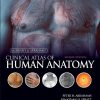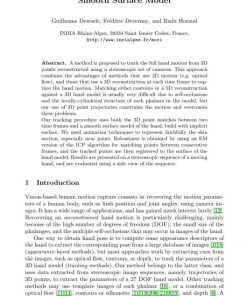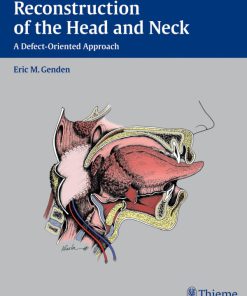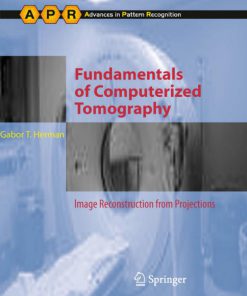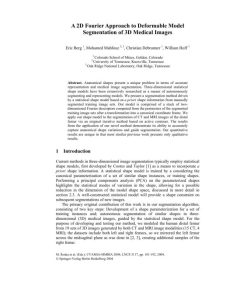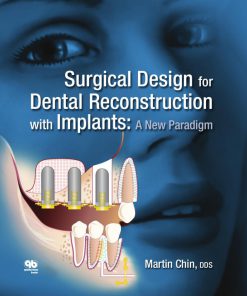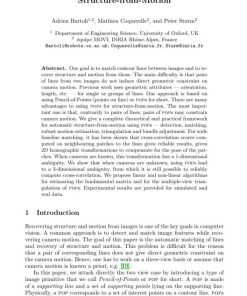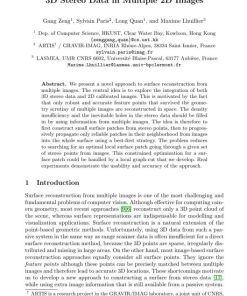Unsupervised Reconstruction of a Patient Specific Surface Model of a Proximal Femur from Calibrated Fluoroscopic Images 1st Edition by Guoyan Zheng, Miguel Ballester, Martin Styner, Lutz Peter Nolte ISBN 9783540447085
$50.00 Original price was: $50.00.$25.00Current price is: $25.00.
Authors:Guoyan Zheng, Xiao Dong; Miguel A. Gonzalez Ballester , Tags:Medical Image Computing and Computer-Assisted Intervention – MICCAI 2007 , Author sort:Guoyan Zheng, Xiao Dong & Ballester, Miguel A. Gonzalez , Languages:Languages:eng , Comments:Comments:Medical Image Computing and Computer-Assisted Intervention – MICCAI 2007
Unsupervised Reconstruction of a Patient Specific Surface Model of a Proximal Femur from Calibrated Fluoroscopic Images 1st Edition by Guoyan Zheng, Miguel Ballester, Martin Styner, Lutz Peter Nolte – Ebook PDF Instant Download/Delivery. 9783540447085
Full download Unsupervised Reconstruction of a Patient Specific Surface Model of a Proximal Femur from Calibrated Fluoroscopic Images 1st Edition after payment
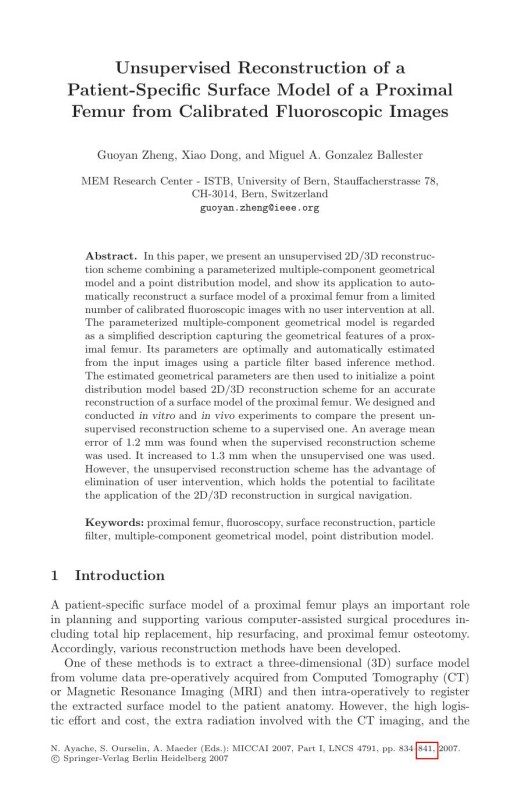
Product details:
ISBN 10:
ISBN 13: 9783540447085
Author: Guoyan Zheng, Miguel Ballester, Martin Styner, Lutz Peter Nolte
Reconstruction of patient-specific 3D bone surface from 2D calibrated fluoroscopic images and a point distribution model is discussed. We present a 2D/3D reconstruction scheme combining statistical extrapolation and regularized shape deformation with an iterative image-to-model correspondence establishing algorithm, and show its application to reconstruct the surface of proximal femur. The image-to-model correspondence is established using a non-rigid 2D point matching process, which iteratively uses a symmetric injective nearest-neighbor mapping operator and 2D thin-plate splines based deformation to find a fraction of best matched 2D point pairs between features detected from the fluoroscopic images and those extracted from the 3D model. The obtained 2D point pairs are then used to set up a set of 3D point pairs such that we turn a 2D/3D reconstruction problem to a 3D/3D one. We designed and conducted experiments on 11 cadaveric femurs to validate the present reconstruction scheme. An average mean reconstruction error of 1.2 mm was found when two fluoroscopic images were used for each bone. It decreased to 1.0 mm when three fluoroscopic images were used.
Unsupervised Reconstruction of a Patient Specific Surface Model of a Proximal Femur from Calibrated Fluoroscopic Images 1st Table of contents:
-
Introduction
- 1.1 Background and Motivation
- 1.2 Importance of Patient-Specific Modeling in Orthopedics
- 1.3 Role of Fluoroscopic Imaging in Medical Reconstruction
- 1.4 Objectives of the Study
-
Literature Review
- 2.1 Techniques for Surface Reconstruction in Medical Imaging
- 2.2 Use of Fluoroscopic Images in Bone Modeling
- 2.3 Unsupervised Learning Approaches for Image Reconstruction
- 2.4 Challenges in Proximal Femur Surface Reconstruction
-
Methodology
- 3.1 Overview of the Reconstruction Process
- 3.2 Calibrated Fluoroscopic Imaging and Data Acquisition
- 3.3 Unsupervised Surface Reconstruction Techniques
- 3.3.1 Image Preprocessing and Calibration
- 3.3.2 Feature Extraction from Fluoroscopic Images
- 3.3.3 Surface Model Construction
- 3.4 Algorithm for 3D Model Generation
- 3.4.1 Registration of Fluoroscopic Views
- 3.4.2 Optimization and Refinement of the Model
- 3.5 Validation of the Reconstructed Model
-
Data Acquisition and Preprocessing
- 4.1 Patient-Specific Data Collection
- 4.2 Calibration of Fluoroscopic Imaging System
- 4.3 Preprocessing of Fluoroscopic Images
- 4.3.1 Noise Reduction and Image Enhancement
- 4.3.2 Calibration and Geometric Correction
- 4.4 Temporal and Spatial Alignment of Multiple Views
-
Unsupervised Learning for Model Reconstruction
- 5.1 Overview of Unsupervised Learning Methods in Imaging
- 5.2 Learning from Fluoroscopic Image Data
- 5.3 Construction of Patient-Specific Surface Models
- 5.4 Incorporating Anatomical Constraints in the Reconstruction Process
- 5.5 Refinement and Evaluation of the Surface Model
-
Results and Evaluation
- 6.1 Visual and Quantitative Evaluation of the Reconstructed Model
- 6.2 Comparison with Ground Truth Models (e.g., CT or MRI)
- 6.3 Model Accuracy and Error Analysis
- 6.4 Evaluation of Computational Efficiency
-
Discussion
- 7.1 Implications of Unsupervised Reconstruction in Orthopedic Imaging
- 7.2 Clinical Relevance of Patient-Specific Surface Models
- 7.3 Limitations and Challenges in Current Methodology
- 7.4 Future Directions and Improvements in Reconstruction Techniques
-
Conclusion
- 8.1 Summary of Findings
- 8.2 Contributions to Patient-Specific Modeling
- 8.3 Impact on Clinical Applications and Surgical Planning
- 8.4 Final Remarks
People also search for Unsupervised Reconstruction of a Patient Specific Surface Model of a Proximal Femur from Calibrated Fluoroscopic Images 1st:
unsupervised reconstruction of a patient-specific
unsupervised mri reconstruction
unsupervised pattern recognition
unconstrained knee replacement
unsupervised recommender system


